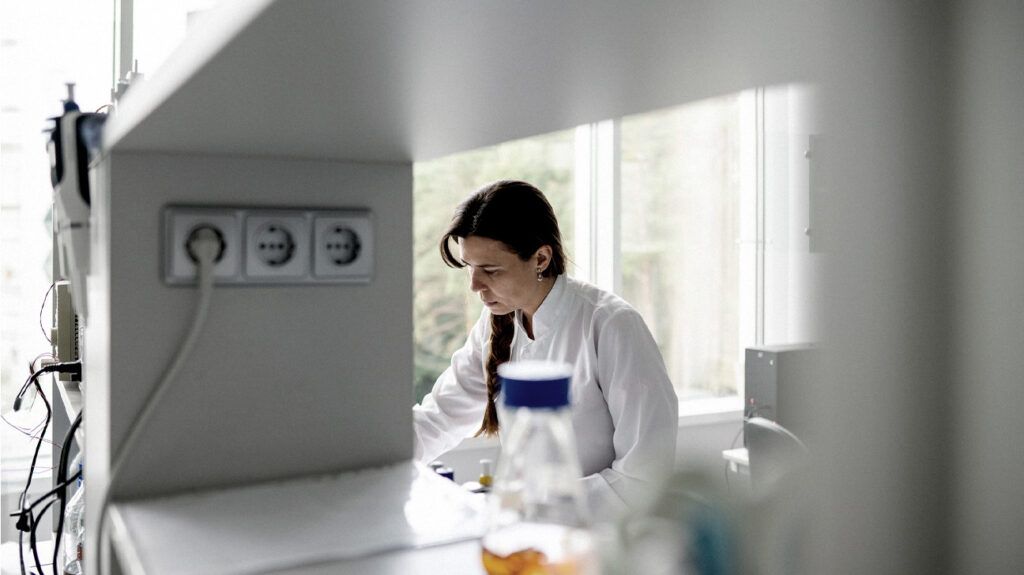
- A new study is deepening researchers’ understanding of how dietary cholesterol enters the bloodstream.
- Researchers say these findings could pave the way for new cholesterol medications.
- Experts say that new drug development based on these findings will require time and significant testing before becoming available to the public.
Scientists at the University of California Los Angeles say they have identified a new step in how dietary cholesterol is absorbed into the body, potentially paving the way for new therapies for high cholesterol.
They have published these findings in the journal Science.
Before cholesterol makes its way into our bloodstream, it first has to be processed from the food we eat by cells on the inner walls of our intestines. This mechanism helps determine a person’s overall blood cholesterol levels, which can have large downstream impacts on cardiovascular and metabolic health over time.
In particular, scientists have been concerned with the process by which free cholesterol is captured and drawn into the cell by an enzyme called NPC1L1, then moves through a cell network known as the endoplasmic reticulum, and finally is converted and prepared to enter into the bloodstream by an enzyme in a process called esterification.
Up until now, doctors have had an incomplete picture of this process.
“How cholesterol that enters the cell through NPC1L1 reaches the endoplasmic reticulum for esterification and regulation of cholesterol synthesis has been a longstanding mystery,” Dr. Peter Tontonoz, a lead study author and a professor of pathology and laboratory medicine at UCLA, said in a press release.
The research team identified a protein class known as Asters — particularly Aster-B and Aster-C — that are responsible for the middle step of getting cholesterol from the exterior of the cell into the endoplasmic reticulum.
“The process is very complex and many steps are unknown, but this study has shed some light on the process,” said Dr. Bradley Serwer, an interventional cardiologist and chief medical officer at VitalSolution, a company that offers cardiovascular and anesthesiology services to hospitals nationwide.
“Once we understand the Aster pathway, we can better identify targets to interfere with the process. The next step after that is using this data to help develop drugs,” Serwer, who was not involved in the study, told Medical News Today.
The two most popular and effective medications for high cholesterol are classes of drugs known as statins as well as PCSK9 inhibitors.
Both of these drugs work by lowering the levels of “bad” LDL cholesterol in the bloodstream, albeit in different ways.
Statins do this by reducing how much LDL is produced by the liver while PCSK9 inhibitors work by helping the liver remove LDL from the bloodstream.
While exploring new drug treatment pathways via this new mechanism could hold promise, we’re a long way — and many studies — away from knowing for sure, said Dr. Cheng-Han Chen, an interventional cardiologist and medical director of the Structural Heart Program at MemorialCare Saddleback Medical Center in California who was not involved in the study.
“The cholesterol absorption mechanism discovered by this research provides a new target for medications to control the amount of cholesterol we absorb from our diet,” Chen told Medical News Today. “However, it is unclear whether this avenue will provide a clinically significant effect on cardiovascular outcomes.“
“While it is clear that controlling the levels of blood cholesterol will lower the risk of heart disease, it is less clear whether controlling dietary cholesterol intake and absorption will give the same benefits,” he said. “Instead, it is the saturated fat in our diet that increases our blood cholesterol levels the most. It is for this reason that most of our effective therapies focus on mechanisms for directly lowering blood cholesterol levels.”
However, experts say there is some reason to think that targeting these Aster proteins could be beneficial.
“Ezetimibe, for instance, effectively inhibits cholesterol absorption by targeting NPC1L1, yet it doesn’t fully engage with the Aster proteins that are critical in cholesterol transport. These discoveries may pave the way for medications with a more precise approach to modulating cholesterol absorption,” said Dr. Rigved Tadwalkar, a cardiologist at Providence Saint John’s Health Center in California who was not involved in the study.
“For instance, the experimental drug AI-3d, aimed at inhibiting Aster proteins, shows promise in precisely intervening in cholesterol transport,” Tadwalkar told Medical News Today. “By impeding the functions of Aster-B and -C, this drug has the potential to effectively reduce cellular cholesterol stores and disrupt cholesterol processing, thereby lowering serum cholesterol levels more efficiently.”
Either way, experts say the jury is out until new drugs are not only developed but thoroughly and safely tested.
“It is important to note that previous pathways have been identified and drugs were developed, but once testing began, it was noted that the family of drugs was too harmful,” Serwer said.
He pointed out the case of torcetrapib, a cholesteryl ester transfer protein inhibitor developed with the intention of raising levels of HDL while lowering LDL cholesterol.
“But in a clinical trial, torcetrapib was
Tadwalkar agreed.
“As with any new treatment, careful consideration of the potential unintended impacts is crucial to ensure safety, efficacy, and appropriate clinical use,” he said.